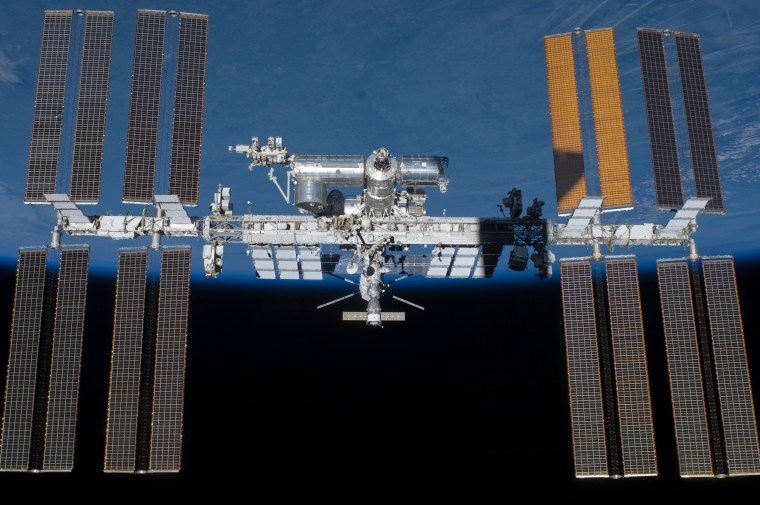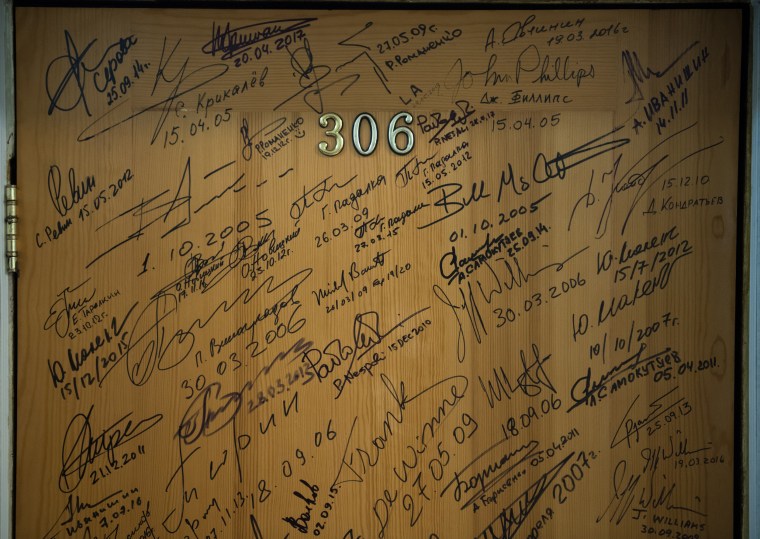WASHINGTON — Even as the U.S. and Russian governments engage in a Cold War-esque, diplomatic tit-for-tat, the countries’ space agencies are forging towards a future in the final frontier.
Roscosmos and NASA announced plans Wednesday to pioneer the Deep Space Gateway program, part of a long-term project to send humans to Mars.
Such cooperation differs largely from the antagonism making headlines, but is relatively commonplace for the two agencies.
In early September, NASA astronaut Peggy Whitson wrapped up a record-breaking mission aboard the International Space Station (ISS) in the grasslands of Kazakhstan. She capped off a 228 consecutive day mission and an accumulated 665 days in orbit — the longest any American has spent in space.

Commander Fyodor Yurchikhin of Russia’s Roscosmos sat by her side in the Soyuz capsule. He has racked up a daunting 673 days in space and sits in the number seven spot on the world’s all-time endurance list.
Decades ago, these competing statistics would be the source of animus between the United States and Russia, former astronauts told NBC News. Today, they are jointly celebrated.
Such collaboration in the “final frontier” dates back to the launch of the International Space Station (ISS) at the turn of the century.
“Despite years of Cold War misinformation about each other, people with a passion for spaceflight were very similar and quickly bonded into strong teams,” said former NASA astronaut Stephen K. Robinson who spent two years training as a backup crew member for the Space Station Expedition 4 in Star City, Russia.
A field once showered with fanfare and riddled with complication now operates largely under the radar as a non-partisan bastion of international cooperation and success, Robinson said.
Today, the United States exclusively relies on Russian Soyuz capsules for transportation to and from the station.
At $81 million a seat, this agreement doesn’t come cheap.
In a speech at the Commercial Space Transportation Conference in February, Trump’s pick to head NASA, Jim Bridenstine, told attendees that America was being “gouged” by such prices.
Until the U.S. develops a reliable space shuttle system of its own or finds a commercial operator, it is bound to Russian prices, experts say. President Bush announced the Space Shuttle fleet’s retirement in 2004 and Obama canceled plans for a new program in 2010.
Both the United States and Russia have been involved in all 52 ISS expeditions since the station’s launch in 2000. At least one American and one Russian have been cohabiting within the confines of the 13,696-cubic-feet orbiting laboratory since November 2, 2000 — six days before George W. Bush was elected to office.

As the station hurdles around earth at the breakneck speed of 4.76 miles per second, crew members conduct research on how the human body copes with low gravity environments. While expeditions ended and began on the ground in September, the remaining trio on the space station experimented with growing lung tissue.
Robinson, who served NASA for 36 years, believes the high-stakes nature of space travel keeps astronauts out of the political fray.
“The sense of dedication to sending humans safely into orbit comes from the magnitude of the challenge, the shared risks, and the conviction that it is more about the human race than about individual nationalities and the attendant politics,” Robinson told NBC News in an email.
However, if confirmed, Bridenstine may reevaluate NASA’s relationship with Russia.
In a questionnaire shared by the Senate Commerce Committee, the Republican congressman listed “maintaining and building international partnerships while ending dependency on unfriendly nations to avoid exploitable vulnerabilities” as one of three of agency’s greatest challenges.

On Sept. 12, a fresh crew of astronauts — one Russian and two American — joined the rest of their team for a five month mission aboard the ISS. They launched from the Baikonur Cosmodrome, a Soviet-era spaceport located in the same sleepy steppes of Kazakhstan that hosted Whitson’s momentous return earlier in the month.
As the international team hurdled into orbit aboard a 15,760-pound spacecraft originally made to beat the U.S. to the moon, the public eye looked elsewhere.
“It is human nature to look away after something succeeds a couple of times, no matter how amazing the achievement,” mused Robinson.